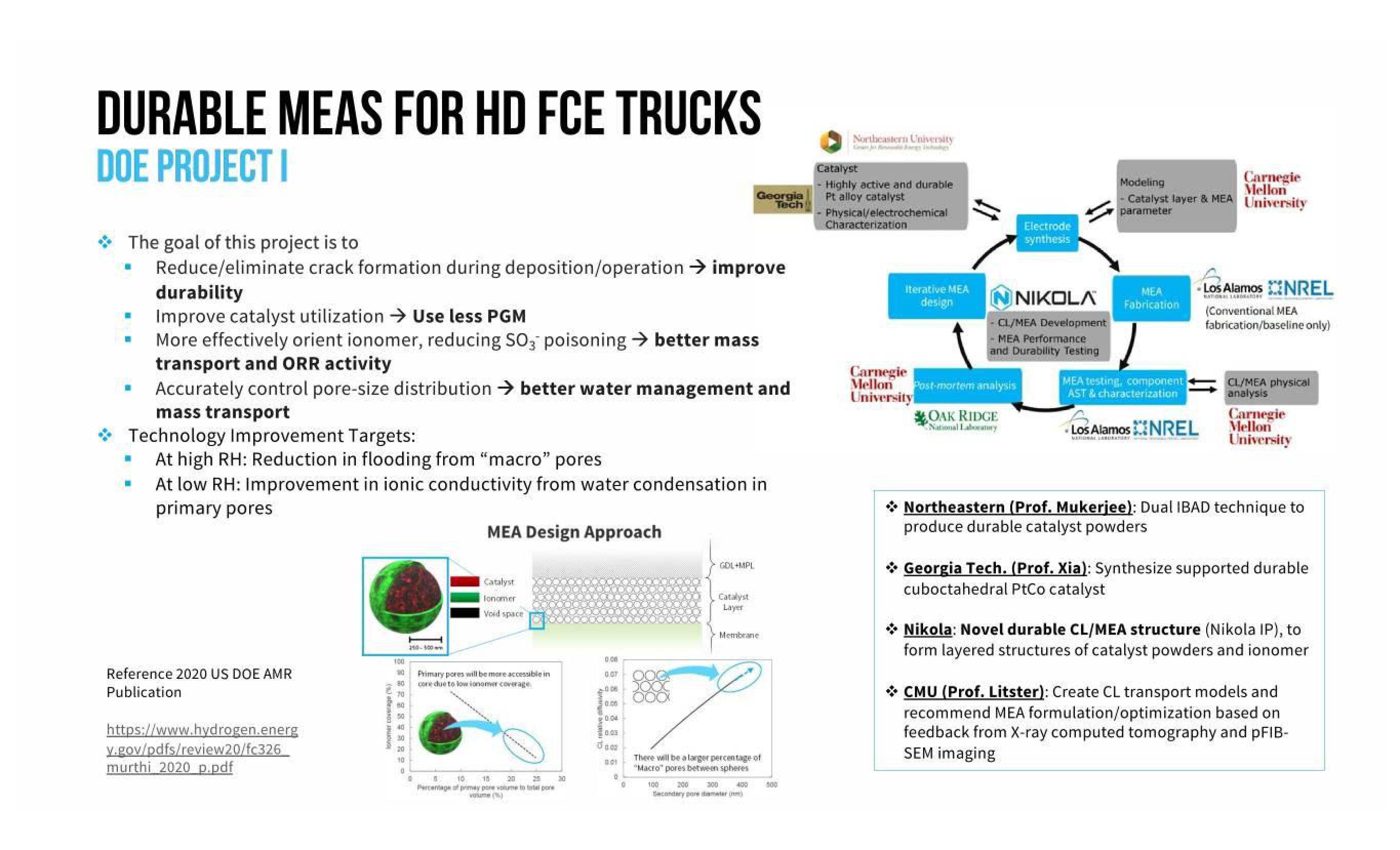Nikola Investor Day Presentation Deck
DURABLE MEAS FOR HD FCE TRUCKS
DOE PROJECT I
The goal of this project is to
Reduce/eliminate crack formation during deposition/operation → improve
durability
Improve catalyst utilization → Use less PGM
More effectively orient ionomer, reducing SO3 poisoning → better mass
transport and ORR activity
Accurately control pore-size distribution → better water management and
mass transport
Technology Improvement Targets:
At high RH: Reduction in flooding from "macro" pores
At low RH: Improvement in ionic conductivity from water condensation in
primary pores
MEA Design Approach
Reference 2020 US DOE AMR
Publication
https://www.hydrogen.energ
v.gov/pdfs/review20/fc326
murthi 2020 p.pdf
BRRRRRRRR
250-500m
Catalyst
lonomer
Void space
10
Primary pores will be more accessible in
80 core due to low ionomer coverage.
10
18
Percentage of primay pone volume to total pore
volume (1)
30
Creative divity
0.00
0.07
0.00
10.04
Jom
0
0
GDL+MPL
Catalyst
Layer
Georgia
Tech
Membrane
There will be a larger percentage of
"Macro" pores between spheres
100
200 300
Secondary pre determi
400
500
Northeastern University
Catalyst
Highly active and durable
Pt alloy catalyst
Physical/electrochemical
Characterization
Iterative MEA
design
NIKOLA
CL/MEA Development
MEA Performance
and Durability Testing
Carnegie
Mellon Post-mortem analysis
University
Electrode
synthesis
OAK RIDGE
National Laboratory
Modeling
Catalyst layer & MEA University
parameter
MEA
Fabrication
Carnegie
Mellon
-Los AlamosNREL
(Conventional MEA
fabrication/baseline only)
MEA testing, component
AST & characterization
Los Alamos NREL
CL/MEA physical
analysis
Carnegie
Mellon
University
* Northeastern (Prof. Mukerjee): Dual IBAD technique to
produce durable catalyst powders
Georgia Tech. (Prof. Xia): Synthesize supported durable
cuboctahedral PtCo catalyst
Nikola: Novel durable CL/MEA structure (Nikola IP), to
form layered structures of catalyst powders and ionomer
CMU (Prof. Litster): Create CL transport models and
recommend MEA formulation/optimization based on
feedback from X-ray computed tomography and pFIB-
SEM imagingView entire presentation